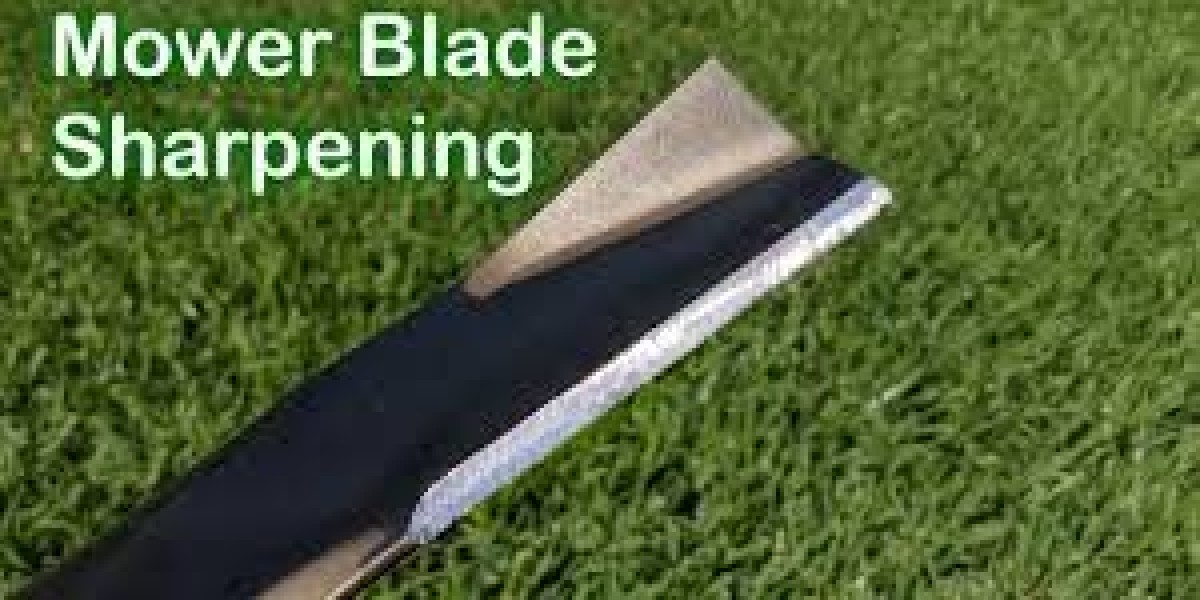Maintaining a lush, vibrant lawn takes more than just regular watering and mowing—it also requires proper care for your equipment. One of the most essential, yet often overlooked, aspects of lawn maintenance is lawn mower blade sharpening. Dull blades can tear grass rather than cutting it cleanly, leading to a ragged appearance, brown tips, and increased vulnerability to disease. By sharpening your mower blades regularly, you not only improve your lawn’s health and appearance but also enhance the efficiency and longevity of your mower.
Why Sharp Blades Matter
When your mower’s blades are sharp, they slice through each grass blade cleanly, which allows the grass to heal quickly and maintain its bright green color. Dull blades, on the other hand, rip and crush grass, leaving jagged edges that dry out and turn brown. This damage not only ruins the aesthetic of your lawn but also stresses the grass, making it more prone to pests, diseases, and drought.
Moreover, sharp blades reduce the amount of time and fuel needed to mow. A mower with sharp blades glides more smoothly and requires less effort to cut, minimizing wear and tear on the engine. If you find your mower is struggling or leaving uncut patches, blade dullness is likely to blame.
How Often Should You Sharpen Lawn Mower Blades?
The frequency of blade sharpening depends on how often you mow and the size of your yard. As a general rule, blades should be sharpened after every 20–25 hours of mowing. For most homeowners, this translates to two or three times per mowing season. However, if you notice the tips of your grass turning brown or your mower isn’t cutting cleanly, it might be time to sharpen sooner.
Inspect your blades regularly. Nicks, dents, or significant wear are signs that sharpening—or even blade replacement—is needed. Also, avoid mowing over rocks or other hard objects, which can quickly dull or damage the blades.
DIY vs. Professional Blade Sharpening
Sharpening mower blades can be a DIY project for those who are comfortable with basic tools and safety procedures. It typically involves removing the blade, clamping it securely, and using a file, grinder, or sharpening tool to hone the edge. Be sure to balance the blade afterward—an unbalanced blade can cause excessive vibration and damage to the mower’s engine.
However, many homeowners prefer to leave this task to professionals. Expert sharpening ensures the correct angle and balance, extending the life of your mower and delivering top-tier cutting performance. Local lawn equipment shops or lawn care providers often offer blade sharpening services at affordable prices.
One such trusted provider is emeraldlawnandturf.com, which offers professional lawn equipment care and maintenance, including precision blade sharpening that keeps your mower in peak condition.
Tips to Extend Blade Life
While sharpening is essential, good maintenance habits can extend the life of your blades between sharpenings:
Clean the deck regularly to prevent grass buildup, which can trap moisture and promote rust.
Avoid mowing wet grass, as it clumps and stresses the blades.
Check for debris in your yard before mowing to prevent accidental nicks.
Store your mower properly in a dry, sheltered area to reduce corrosion.
A Simple Step with Big Impact
Regular lawn mower blade sharpening may seem like a small detail, but it has a big impact on your lawn’s health and appearance. Sharp blades make mowing easier, improve fuel efficiency, and keep your grass looking fresh and well-maintained. Whether you sharpen your blades yourself or trust a professional, keeping them in top shape is one of the smartest steps you can take in lawn care.
Don’t wait until your lawn starts to suffer—make blade sharpening a part of your seasonal maintenance routine for a cleaner cut and a greener yard.






